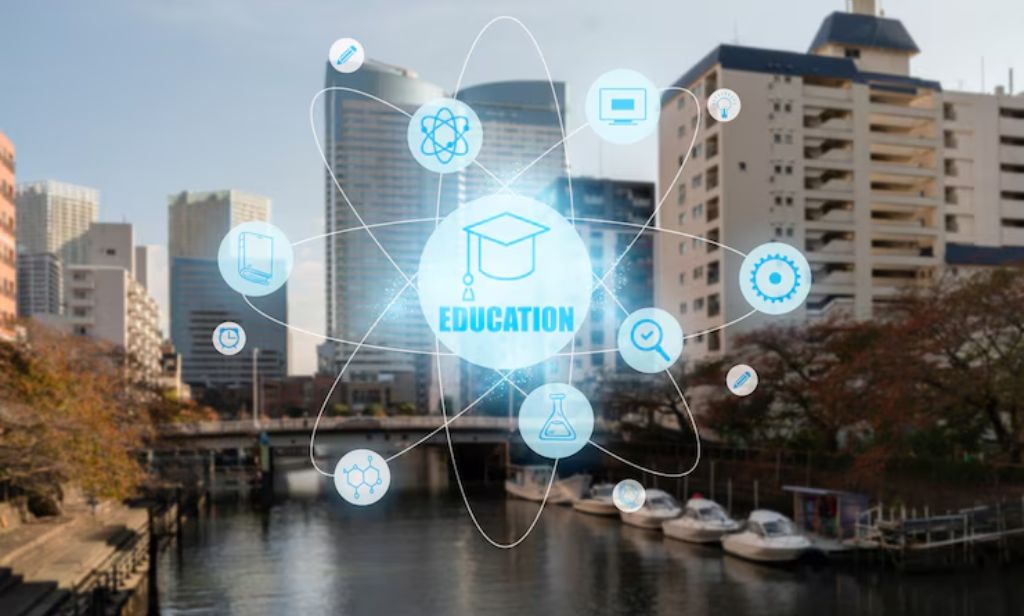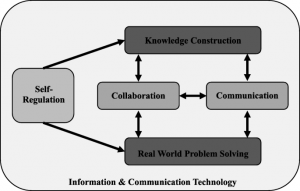
Language and Cognition
It has been widely discussed in the literature of cognitive approach towards language acquisition that humans organize the world in concepts and children acquire those concepts. So, what cognitive linguists have stated that perceptual experience gives rise to conceptualisation followed by lexicalisation. Genter and Borodistky (2000) argue that there are two possibilities: one in which concepts arise from cognitive-perceptual sphere, which they term as Cognitive dominance and the second possibility is the Linguistic dominance, which states that the world presents perceptual bits whose clumping is not ‘pre-ordained’. In fact the usage of language leads these perceptual bits to get conflated into concepts. It is quite a well-known fact that children acquire language effortlessly, without being taught explicitly. They acquire language in a way that is similar across cultures. They start with the babbling stage, then they gradually move to one-word stage, multi-word, and finally establish relations between linguistic items.
Noun Advantage
Noun Advantage is a well-known phenomenon in child language acquisition. The first productive words of one to two year old children (excluding greetings and refusals) are predominantly nouns.
Gentner (1982) states that an infant learning a language has two streams of information: first, the ongoing stream of the perceptual-cognitive information about the world around; second, the stream of language being spoken. The child’s task in learning word-meanings is to match up these two streams. Now there are some collections of perceptual information that are particularly easy to separate from the world stream, perhaps because they are more salient, or more stable. And these particularly stable concepts are considered to be concrete objects and lexicalised in adult language as nouns. Gentner, based on cross-linguistic evidence (from languages likes Mandarin Chinese, Japanese, German, Turkish, English), shows that nouns enter the vocabulary before verbs. Gentner and Boroditsky claim that noun-dominant property of a child’s early word stage rests upon two corollaries of the Division of Dominance: Natural partition hypothesis and relational relativity hypothesis (Gentner, 1988; Gentner and Boroditsky, 2000). Division of dominance takes off the classical distinction between open class and closed class lexical category. Open class words have denotational functions and closed class words serve grammatical or relational functions. Gentner (1981, 1988) reviewed this distinction and suggested that this division is better viewed as a continuum, with verbs and prepositions ranged between nouns and closed class words. Like closed class terms, verbs and prepositions perform relational functions. They are linguistically embedded, i.e., their forms, meanings, and usages are shaped by language to a greater degree than is the case for concrete nouns.
So, if we look into the division of dominance continuum we can notice that at one end concrete nouns, which refer to objects and animate beings, follow cognitive- perceptual dominance. They denote entities that can be individuated on the basis of perceptual experience. On the other end we have closed class terms which follow linguistic dominance. Their meanings do not exist independent of language. Unlike closed class terms, verbs (motion verbs) and (spatial) prepositions have denotational function, but the composition of events and the relations they denote, those are negotiated via language.
The first productive words of 1-2 year old children are predominantly nouns. It has been a matter of debate that noun dominance is due to the cognitive salience of objects in the environment, or due to a difference in the way a language structures nominal and verbal categories. G&B proposed two interrelated hypotheses that respectively address these factors: NP and RR. NP hypothesizes that concrete objects and entities are easier to individuate in the world and therefore easier to label. Verbs on the other hand refer to ‘relational constellations’ (Gentner, 1982) which require the presence of the entities they link. Entities thus have representational priority in the infant mind and consequently in infant language acquisition. Predicative meanings vary more than those of concrete nouns because relational terms are not ‘out there’ as individuated objects are. In language acquisition study (Nelson, Goldin-Medow, Gentner, Vijaya and Amritavlli, among others) it is observed that the acquisition of verbs proceeds in tandem with other closed class terms and this heralds the multi-word utterances. Thus, verb production marks the onset of syntax in a language.
So, the question that now arises: Is it the case that cognitive dominance and linguistic dominance are the only factors that influence language acquisition?
Universal Grammar and Language Acquisition
We know that when language cannot find its way through oral-modality through manual channel, as in sign language. When other children at the age of 6-8 months start to babble: produce sequence of sounds without attached meaning, the deaf and blind children exposed to a sign language also start to babble in the manual modality. Landau and Glietman (1985), Bigelow (1987), among others have found that the vocabulary of blind children consists of less object words and more action words. This may be obvious given the nature of the disability. The sensory-perceptual experience that surrounds the acquisition of language is very different for a blind and a sighted child; yet the language of these children grow in very similar fashion. Petitto (1996) has shown that the same milestones of language development characterise the acquisition of spoken and sign language. At 6-8 months children start to babble orally or manually, around 12 months the first words or first signs appear, around 24 months children start to combine words or signs together. Thus the modality in which language is expressed (orally or manually) does not change the course of language acquisition. The kind of linguistic and extralinguistic experience available to deaf or blind children is different from that of hearing and sighted children. Yet, there are not great differences in the milestones of language development.
So, how does this happen? The cognitive dominance or the natural partition hypothesis cannot account for this. Let us first talk about the nature of linguistic input. The linguistic input is impoverished in both natural language and sign language. We will see that input does not encode information to infer how the linguistic structure is organised. The linguistic output outstrips the linguistic input.
- Let’s take a look at some natural language data
- Show me the second underlined black ball
The way words are combined obey some constraint.
These examples illustrate one of the key property in linguistic rules: recursiveness. There is nothing in the string of sounds that alluded to this property. There are many more instances that support the argument for the poverty of stimulus.
Now the argument for the poverty of stimulus also holds in the case of sign languages. Goldin-Meadow (1982, 1984, 1998) studied the homesigns of the children raised in the USA and in China. Homesigns: deaf children spontaneously create rudimentary and idiosyncratic gestures to communicate with hearing members of the family or other deaf people. Goldin-Medow found some interesting observations. Combination of signs (around 24 months) by deaf children reared in different cultures shared structural properties. The specific patterns that these homesigns children from the USA and China developed were neither similar to that of the respective oral languages (English and Chinese), nor to that of the respective sign languages (ASL and CSL). It was a pattern found in some natural languages spoken around the world, Basque, Tibetean, some aborigine languages spoken in Australia. So, if this knowledge does not come from the input, where does it come from? Chomsky’s answer that humans are biologically endowed with a UG, an innate structure that encodes the form of a possible human language and that guides the child during the acquisition of language. Now the fact that children are endowed with such a structured capacity for language does not mean that the environment does not have a role to play. Off course, it does.


 The Problem at Hand
The Problem at Hand

